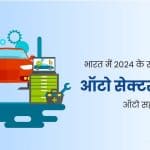The primary advantage of the secondary market is to provide liquidity. It acts as a platform where existing securities like stocks, bonds, and mutual funds can be easily bought and sold. Platforms like Alice Blue offer seamless trading experiences in this market, making it even easier for investors.
Content:
- What Is the Secondary Market?
- Advantages Of Secondary Market
- Characteristics Of Secondary Market
- Objectives Of Secondary Market
- Benefits Of Secondary Market – Quick Summary
- Advantages Of Secondary Market – FAQs
What Is the Secondary Market?
The secondary market is where investors trade securities already issued, as opposed to the primary market where companies sell new securities. It’s the place to buy or sell shares post-IPO, using platforms like Alice Blue.
Advantages Of Secondary Market
Providing liquidity in the stock market is one of the main advantages of the secondary market. This enables traders like you to sell holdings quickly and also buy whenever needed.
But there’s more to it:
- Price Discovery: The secondary market plays an essential role in establishing the actual market value of a security. For example, the price of a stock will naturally rise if it is heavily bought.
- Transparency: High levels of transparency ensure that all players have equal access to crucial information, mitigating the risk of manipulation.
- Diversification: The secondary market offers a variety of financial instruments, enabling investors to diversify their portfolios.
Characteristics Of Secondary Market
The most defining characteristic of the secondary market is that it’s the marketplace for buying and selling securities. This is where an investor can purchase new securities and sell his holding anytime during the active market hours.
There are more defining characteristics of the secondary market:
- Organizational Structure: Formal markets like stock exchanges are regulated, whereas OTC markets are less formal and not bound by a centralized exchange. For example, Nasdaq is a formal, regulated market, while Forex trading often happens over the counter.
- Types of Instruments: Stocks, bonds, and derivatives are common instruments. Alice Blue, for example, offers a platform to trade in multiple types of financial instruments.
- Market Participants: Includes retail investors, institutional investors, and market makers, each playing a unique role in the market dynamics.
- Trading Volume: High trading volumes are often seen in popular stocks, also which contributes to liquidity.
Objectives Of Secondary Market
The primary objective of the secondary market is to provide liquidity to securities. Doing so makes trading easier and more efficient.
Here are the main objectives detailed:
- Providing Liquidity: As we’ve discussed, the secondary market allows for easy trading of existing securities, turning them into liquid assets. So, if you want to cash out, this is your go-to-market.
- Price Determination: The constant buying and selling in the secondary market help to establish the fair market price of different securities. This is essential for both buyers and sellers to get a good deal.
- Safety of Transactions: With regulated platforms and clear trading procedures, the secondary market aims to provide a safe environment for trading. Platforms like Alice Blue adhere to these regulations, ensuring secure trades.
- Capital Allocation: By facilitating securities trading, the secondary market helps in the optimal allocation of capital. It directs funds from less profitable ventures to those that have higher potential returns.
To understand the topic and get more information, please read the related stock market articles below.
| intraday vs delivery trading |
| Features Of Secondary Market |
| Trading on Equity |
| Abridged Prospectus |
| Types of Prospectus |
| Anchor Investor Meaning |
| Treasury bill |
Benefits Of Secondary Market – Quick Summary
- The secondary market provides liquidity, enabling easy conversion of assets into cash.
- Secondary market is a market for trading existing securities among investors, distinct from the primary market where new securities are issued.
- The secondary market is primarily defined by its organizational structure, the types of instruments traded, and the participants involved.
- Secondary market aims to provide liquidity for the traders, which in turn ensures price determination and facilitates optimal capital allocation.
- With Alice Blue, investing in IPOs, mutual funds, and stocks is entirely free of charge. We offer Margin Trade Funding, which allows you to purchase stocks on a fourfold margin, i.e., stocks worth ₹10,000 for ₹2,500.
Advantages Of Secondary Market – FAQs
What are the secondary market advantages?
The secondary market offers several advantages, the most significant being liquidity. It enables investors to easily buy and sell existing securities, turning their investments into liquid assets. Additionally, the secondary market helps in price discovery, ensuring that securities are traded at fair market value. Transparency and the ability to diversify your portfolio are other perks.
What are the characteristics of the secondary market?
The secondary market is characterized by its organizational structure, which can be a formal exchange like the stock market or an over-the-counter (OTC) market.
What is the main function of the secondary market?
The main function of the secondary market is to provide a platform for trading existing securities, thereby offering liquidity to investors. It serves as a marketplace where buyers and sellers can meet to sell securities without involving the issuing companies directly. This is crucial for investors looking for opportunities to enter or exit positions quickly.
What are the advantages of the primary market?
While the secondary market deals with existing securities, the primary market is where new securities are issued. One of the main advantages of the primary market is that it provides companies with a way to raise capital directly from investors.
What are the products of the secondary market?
The secondary market offers a wide array of financial instruments for trading, ranging from stocks and bonds to more complex financial products like derivatives. Mutual funds are also often traded on the secondary market. Platforms like Alice Blue offer a wide range of these products, catering to various investment needs.
We hope that you are clear about the topic. But there is more to learn and explore when it comes to the stock market, commodity and hence we bring you the important topics and areas that you should know:






